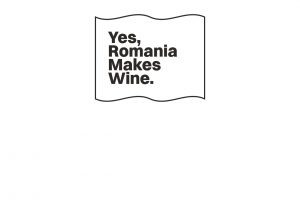In partnership with Wines of Romania
Vines are grown in just about every corner of Romania, a testament both to the diversity of the country’s landscapes, mesoclimates and terroirs, and to wine’s central place in Romanian culture. Discover this fascinating tapestry and get to know the producers representing each of the regions and DOCs at Prowein 2024.

Credit: Maggie Nelson
Transylvania Plateau
It’s not hard to see why Transylvania’s fairytale scenery and rustic charm have captured so many imaginations. Its historic castles, gothic hotels and picturesque cottages, set among fields still worked with donkeys, make it an alluring holiday destination for travellers seeking a trip back in time: brown bears and wolves still roam its dark forests.
For wine growers and producers, Transylvania Plateau also offers many attractions. Sitting on a high central plateau, ringed by the horseshoe-shaped Carpathian mountains, the region has over 6,000ha under vine. Its altitude (up to 500m above sea level) makes the area cooler than many parts of Romania – a factor that explains the historical focus on white grapes. Late ripening and cool climate varieties thrive here; Fetească Regală, Fetească Albă, Sauvignon Blanc, Pinot Gris, Fetească Neagră, Pinot Noir are the most planted.
Among its most important appellations are Jidvei DOC, Lechința DOC and Târnave DOC, where the cooling effects of its 300m elevation are compounded by two nearby rivers (Târnava Mică and Târnava Mare).
Jidvei
Based in the DOC of the same name, Jidvei is a key Transylvanian wine producer for both its history and its size. The company has 2500ha of vineyards, aged 4-20 years old, making it Romania’s largest vineyard holder and one of the biggest in Europe under single ownership. Founded in 1949 and privatised in 1999, Jidvei has become a beacon of innovation and education by introducing cutting edge technology and creating the first private school of viticulture and oenology in Romania. Jidvei owns Romania’s first – and one of Europe’s largest – gravity wine cellars, Crama Tauni.
Liliac
Although a relative newcomer, Liliac has quickly established an impressive reputation in Lechința DOC since releasing its first vintage in 2011. Liliac has pioneered red wines in the region, as well as experimenting with recioto styles and producing Romania’s first orange wine. This innovative approach extends to its sustainable viticultural practices: bats (‘liliac’ in Romanian), are encouraged through nesting boxes in the vineyards for natural pest control.
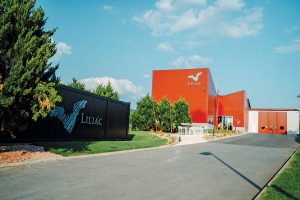
Crișana and Maramureș
Northwest of Transylvania, the region of Crișana and Maramureș is home to two DOCs: Minis and Crișana, and can be considered Romania’s sparkling wine heartland. The region has seen centuries of cultural interchange with neighbouring Hungary, whose viticultural traditions have been an important influence. The climate is more continental than in other parts of the country, and soils range from volcanic to shale, limestone, gravel, clay and iron oxide. Autumns are long and warm, extending the growing season, and thus producing grapes of particular balance and aromatic complexity. As well as local varieties Fetească Albă and Fetească Regală, varieties grown in the region include Hungarian Furmint, Cabernet Sauvignon and Pinot Noir. In the Apuseni mountains in the region’s southeast, more than 200,000 tourists per year venture into the famous Bears’ Cave to see some of the best-preserved skeletons of the cave bear, extinct since the Ice Age.
Darabont Winery
Darabont Winery (Familia Darabont), based in Crișana DOC, has been family-owned for three generations. Vinifying only its own grapes, Darabont manages over 40ha of vineyards, on a variety of limestone, clay and loess-dominated terroirs, with a focus on precision viticulture, sustainability and innovation.
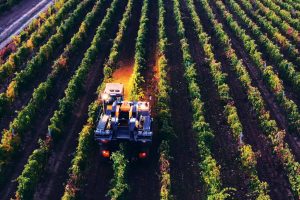
Moldovan Hills
In Romania’s east, to the north-east of the Carpathians, the Moldovan Hills region borders Moldova along the river Prut. This area includes the Cotnari DOC, possibly the country’s oldest winegrowing region. Due to harsh northerly winds, vineyards here are often planted on south- and south-west-facing terraces for protection and optimal exposure. In this area of rolling hills, elevation ranges from 200-500m, and the region experiences high levels of sunshine (over 2,000 hours) and only around 500mm of rainfall each year.
Iași, the regional capital and Romania’s third-largest city, is a top destination for visitors to the country, and has a reputation as a cultural, artistic and academic centre. Architecture landmarks are a key highlight: among the most remarkable are the Grand Hotel Traian, designed by Gustave Eiffel, and Iași university – which houses one of Romania’s leading viticultural research laboratories. Dating from the 1600s and remarkably well preserved, the Cetățuia Monastery, located on a hilltop within the city, has cellars full of wine produced by its own monks.
The Moldovan Hills region has extensive plantings of Grasă, Tămâioasă Românească, Fetească Albă and Frâncușă, which together form the traditional blend of Cotnari’s famous sweet white wine. These wines (sometimes botrytised) have been renowned since the 1500s, and competed with Tokaji Aszú as favourites in the courts of late medieval Europe.
Cotnari
Cotnari has over 1,700ha of vineyards, 1,300 currently under production. The estate grows Romanian varieties only; with historical plantings of Grasă de Cotnari, Frâncușâ, Fetească Albă and Tămâioasă Românească, it has recently added Fetească Neagră and Busuioacă de Bohotin. Cotnari’s focus is on premium dry and semi-dry whites, produced from low-yielding vines. Grasă de Cotnari is the producer’s flagship, yielding wines with a unique character and ageing potential.
Domeniile Avereşti
Domeniile Avereşti produces wine in Huși DOC, a high-altitude, cool-climate area. With a cellar dating back to 1874, Avereşti values its historical roots, focusing on the production of white wines from local varieties such as Zghihară and Busuioacă de Bohotin. Every year, the initial bottle of each vintage is ceremoniously placed in the cellar, paying tribute to nature and the region’s former vinegrowers.
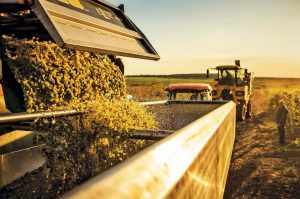
Gîrboiu Family Estate
The family-owned and -run Gîrboiu winery was established in 2005. Its vineyards cover around 200ha in the hills of Cotești DOC at elevations of 150-200m, and include plantings of forgotten local varieties Șarbă and Plăvaie. The winery’s portfolio includes brands whose names allude to the frequent earthquakes in the area – Vrancea is Romania’s most active seismic area.
Muntenia and Oltenia Hills
Muntenia and its western neighbour Oltenia cover a large area south of Transylvania, in the foothills of the southern Carpathians. Overall, the Muntenia and Oltenia Hills region is largely devoted to red wine, with Cabernet Sauvignon, Merlot, Pinot Noir, Syrah and Fetească Neagră as the most planted varieties. However, white wines are also produced in the region: the area around Pietroasele, 99km northeast of Bucharest, produces sweet, late-harvest Tămâioasă (often botrytised) on its calcareous soil.
Muntenia is home to the renowned Dealu Mare DOC (lit. ‘big hill’), often referred to as ‘Romania’s Tuscany’. This large DOC – with circa 3,200ha of vines – stretches for about 65 kilometres, and is widely considered one of the most important in the country, producing both red and white still wines to wide international acclaim.
Viile Budureasca
Viile Budureasca, one of Dealu Mare’s most prominent producers, has won 500 international medals for its wines, which it exports to 23 countries. It has a diversified and great-value portfolio – recently expanded to include sparkling, organic and orange wines – with more than 20 ranges targeting all market segments. At the crossroads of tradition and innovation, Budureasca has a modern, New-World approach led by winemaker Stephen Donnely at the estate’s state-of-the-art winery.
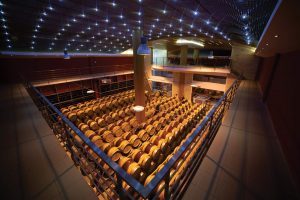
Domeniile Franco-Române
A Dealu Mare pioneer, Domeniile Franco-Române (DFR)was founded by Burgundian winemaker Denis Thomas in 2000. Identifying a terroir similar to Burgundy, Thomas set out to make ‘Romanian wines with a French touch’. Conversion to organic farming began in 2003, and in 2006 the winery produced the first certified organic wine in Romania. Today, DFR is under the ownership of the Olariu family, with Mihnea Olariu at the helm. The Olarius expanded DFR’s holdings by incorporating 40ha from the storied Domeniile Persu-Eminescu, an estate owned by Mihnea’s great-grandparents, Alexandru Persu and Ecaterina Eminescu (granddaughter of eminent Romanian poet Mihai Eminescu), since the 1840s.
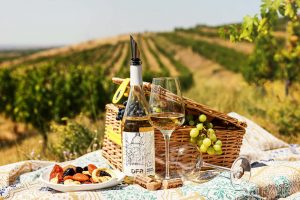
Aurelia Vișinescu
Before founding her namesake winery, with partner Steven Cacenco, in 2003 in Dealu Mare, oenology-trained Aurelia Vișinescu honed her craft working three vintages South Africa and Australia. Although this New World experience influences the style of her wines, she pairs it with a passion for her country’s winemaking history and local varieties. Aurelia Vișinescu pioneered the vinification of Fetească Neagră as a dry wine, actively contributing to the reassessment of the grape’s potential.
Davino
The famed Davino winery needs little introduction. Having started in 2003 as only the third private winery in Romania, Davino has consistently been among the country’s most highly regarded producers ever since. Produced from 88ha of vines, including 40-year-old Cabernet Sauvignon and Merlot, Davino’s wines range from blends expressing terroir, single-varietal wines showcasing local grapes to the renowned Domaine Ceptura collection and the powerful, long-lived Flamboyant.
DeMatei
With 70ha of vines – including plots planted more than 40 years ago – located around the hills of Tegăneanu and Zorilor, DeMatei is an acclaimed Dealu Mare producer known for the quality and age-worthiness of its wines hailing from old vines. It is well known among Romanians as the producer of Prince Matei, an iconic Merlot produced with fruit from the Villa Zorilor vineyard in Dealu Mare every year since 1998. DeMatei has also earned international recognition for its Migala and single-vineyard Patima ranges.

Ceptura
Ceptura Winery produced its first wine in 2005 following the reconstruction of its winery. Since then more than 7M € have been invested in sophisticated state-of-the-art equipment. With 120ha of vineyards, Crama Ceptura’s winery is located in the Ceptura village, Prahova County, in the heart of Dealu Mare. Armed with great international expertise, the estate produces a diverse and characterful range, from both local and international grape varieties, that fully express the uniqueness of the local terroir.
Viile Metamorfosis
The potential of Dealu Mare’s terroir has not gone unnoticed by foreign winemakers: including Piero Antinori, of the storied Italian winemaking dynasty. Antinori founded Viile Metamorfosis in 2008 with the aim of expressing the full potential of the local grapes and terroirs. It established Negru de Drăgăşani in the region, alongside other Romanian varieties such as Tămâioasă Românească, Fetească Albă and Fetească Neagră. With 70ha of vineyards, the estate is attracting particular attention for its Via Marchizului single-vineyard range.
Sâmburești Vineyards
Sâmburești takes its name from the Sâmburul hill and the surrounding DOC, whose plum trees are a testament to its warm mesoclimate. Its origins date back to the beginning of the 20th century, when Vintila Bratianu, a prominent Romanian aristocrat and politician, invited French oenologist August Joseph Ville to visit the estate. Sâmburești has since focused on Bordeaux blends following Ville’s advice to plant French noble varieties. In 2005, the Valvis family took over the estate, building upon its historical reputation while investing on modern equipment and extending vineyard holdings to a total of 500ha.

Oprişor Wine Estate
Located in Mehedinți county, in the heart of the Oltenian hills, Oprişor Wine Estate – owned by German group Reh Kendermann – grows a range of 13 local and international varieties in its 252ha of vineyards. Having bought and refitted a cellar dating from the 1970s with modern equipment, Oprişor nonetheless found a use for one of its enormous concrete tanks, which now serves as its tasting room.
Dobrogea
In the country’s south-eastern corner, between the Danube and the Black Sea coast, lies Dobrogea. Due to its southerly position, the region enjoys a warm climate, with some moderating maritime influence. Dobrogea sees very low rainfall for Romania (150-200mm) and up to 300 days of sunshine each year, attracting winemakers and tourists alike. This does mean, however, that Dobrogea is one of the regions of Romania most threatened by the effects of climate change. The Murfatlar Research and Development Center for Viticulture and Vinification has been collecting invaluable climate data since the 1960s, allowing viticulturists to track and better understand its effects, particularly on different grape varieties.
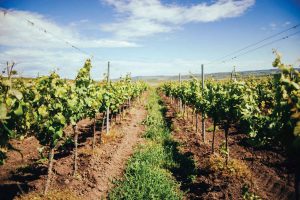
Murfatlar (known for periods of its history as Basarabi) is its most famous wine-producing subregion, traditionally known for dry whites and sweet desert whites, and has now been granted DOC status. Tourists can visit the Basarabi-Murfatlar Cave Complex, a medieval Christian monastery made up of linked tunnels and caves dug into the chalk hills. The cave complex includes several churches, dwelling rooms and tombs dating from the 9th-11th centuries AD, and features religious carvings and inscriptions in several languages.
Nearer the Black sea, Dobrogea contains the wetlands of the Danube delta, which includes several national parks to protect the area’s rich and important biodiversity. By creating a wind corridor, the Danube also plays an important role in the moderation of the region’s climate.
Rasova
Family-run Rasova has 61ha of vineyards in the Murfatlar DOC, and has become famous for both its wines and architecture. It released its first wines in 2015 with the aim of becoming a benchmark of terroir-driven winemaking, expressive of the Dobrogea region, and quality hospitality. Rasova’s modern, gravity-fed winery, designed by Bruno Andresoiu, was completed in 2016, and sits right on the banks of the Danube. Having instantly become a popular tourist destination, it is perfectly positioned as the first thing visitors see as they cross the Cernavodă bridge returning from the seaside.

Domeniul Bogdan
A sustainability pioneer, Domeniul Bogdan, near the village of Peștera, has been organic certified since 2016. Its vineyards in Murfatlar DOC, covering a total of 154ha, have an upper layer of chernozem over chalky soil, and see moderating influences from the Black Sea – a idiosyncratic terroir reflected in Bogdan’s wines. Innovation, terroir and biodynamic practices are used to craft expressive wines, among which are renowned expressions of Fetească Neagră, the estate’s flagship and most planted variety.
Dropia
The family-owned Dropia Winery, located near the Insurăței village, manages all its vineyards following organic and sustainable viticulture practices. The vineyards are embraced by the Viişoara Forest, which provides a moderating effect and contributes to the overall balance of the vines. With the belief that great winemaking starts in the vineyards, Dropia employs a quality-led approach to produce a range of accessible and approachable wines.
Viticola Sarica Niculițel
Viticola Sarica Niculițel Winery was established as a state-owned producer in 1958 and privatised in 1991, with extensive plantings taking place in the 60s. The estate now has 700ha, located in the oldest vineyard area in Dobrogea. Sarica Niculitel pioneered the planting of Aligoté in the region, gaining international acclaim for the wines produced with the French variety. Among them is the estate’s award-winning Caii de la Letea Aligoté, named after the horses of Letea, Europe’s largest colony of wild equines.
Murfatlar
Murfatlar is one of Romania’s most storied estates, tracing a direct lineage to winemaking practices in the region as far back as 43 BCE. Its modern history started in the early 20th century, with new plantings of international varieties, and gained traction with the creation of the state-owned Murtaflar in 1955. The estate expanded to cover 2600ha of vineyards, becoming Romania’s leading producer and producing wines that soon gained international recognition. In 2023, Murtaflar started a new chapter under private ownership, with the aim of consolidating and carrying the reputation of the estate’s wines forward.
Banat
In the west of the country, bordering Serbia and Hungary, Banat has a comparatively small vineyard area and total wine production. The region has a moderate, Mediterranean climate, cooler than the rest of the country but warmer than most of nearby Hungary, with which its history – viticultural and otherwise – is intertwined. It encompasses – within Romanian territory – two DOCs (Banat and Recaş) and two IGPs (Viile Timișului and Viile Carasului).
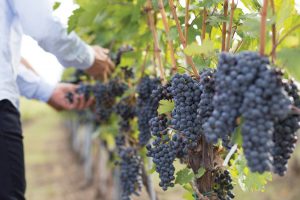
The term ‘Banat’ has its roots in the Middle Ages, when ‘banate’ was used to designate frontier provinces ruled by a military governor called a ‘ban’. Overall, Banat remains a transnational region, straddling Romania, Serbia and Hungary. It is therefore essentially multicultural, with a rich wine and food heritage shaped by all the different ethnicities – Romanians, Serbs, Hungarians and Swabians – that share its territory and history.



